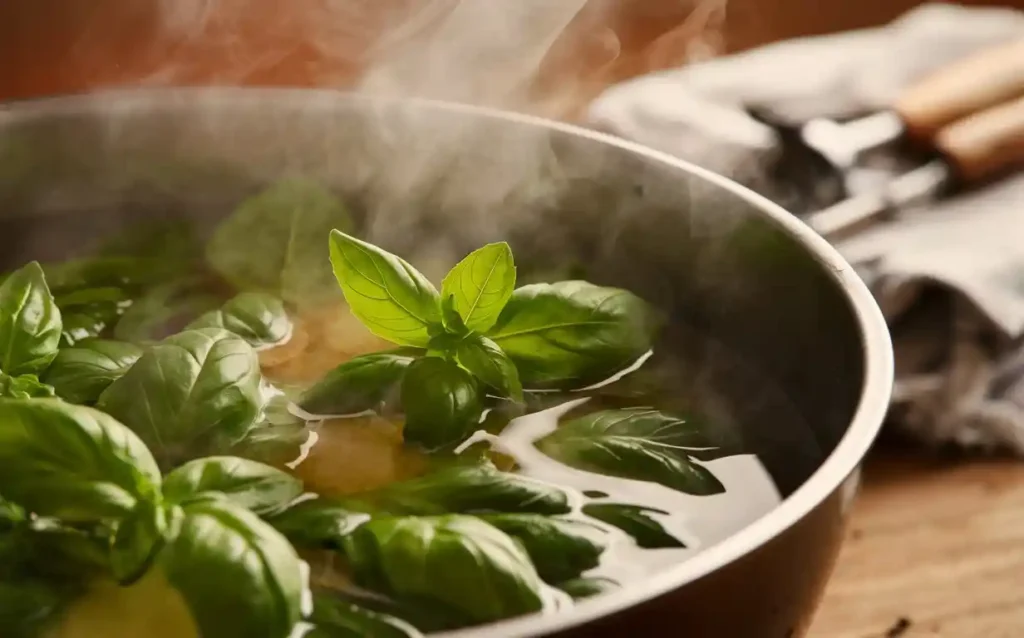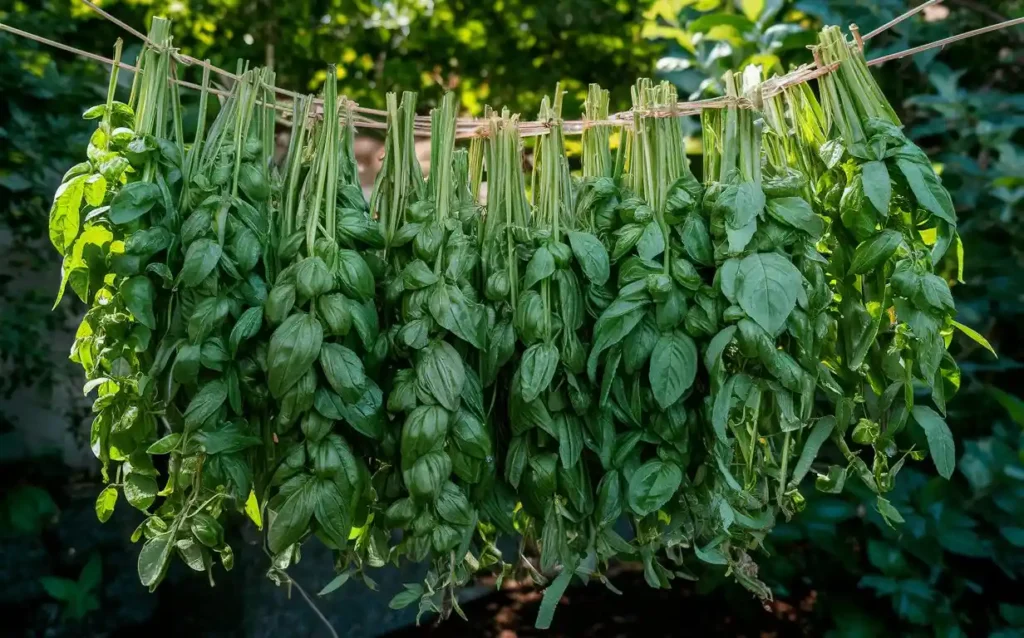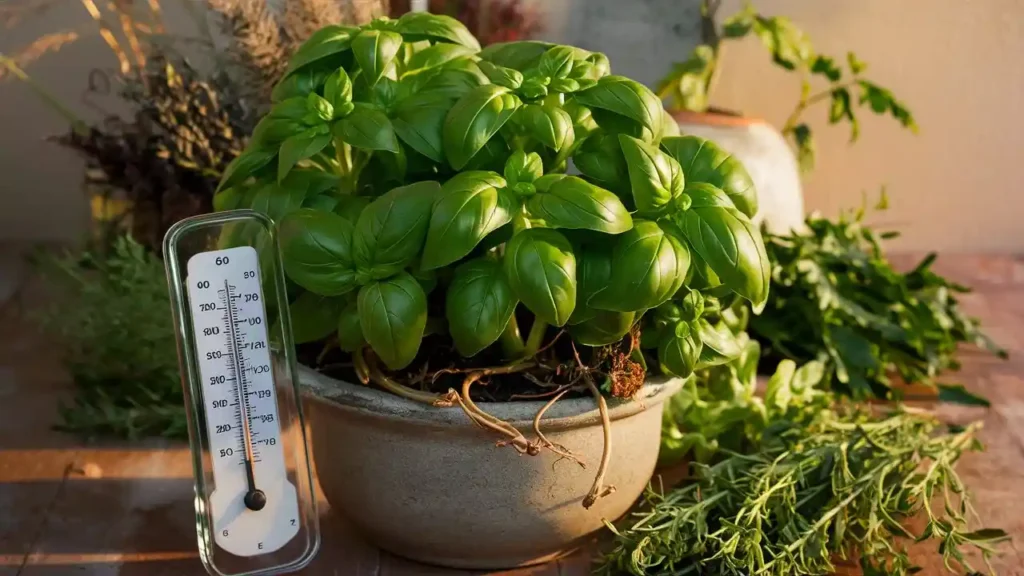What To Do With Fresh Basil Before It Goes Bad
Fresh basil is a delicious herb that can be used in a variety of dishes. However, it can go bad quickly if not stored properly. Here are a few tips on how to keep your fresh basil fresh for as long as possible:
- Store basil in a glass of water, with the stems submerged and the leaves above the waterline.
- Cover the basil loosely with a plastic bag or wrap.
- Place the basil in the refrigerator.
- Change the water every few days.
With proper care, fresh basil can last for up to two weeks in the refrigerator.
Storing Fresh Basil
Basil is a delicate herb that can quickly wilt and lose flavor if not stored properly. To keep your basil fresh for as long as possible, follow these simple tips:

1. Choose fresh, undamaged basil: Avoid leaves that are bruised, yellowed, or wilted. Look for basil with vibrant green leaves and a strong, aromatic scent.
2. Trim the stems: Remove any woody or brown stems from the basil leaves. This will help the leaves absorb water more easily.
3. Place in a glass of water: Fill a glass or jar with about an inch of cold water. Submerge the basil stems in the water, leaving the leaves above the surface.
4. Cover loosely: Place a plastic bag or wrap loosely over the glass to create a humid environment. This will help prevent the basil from drying out.
5. Refrigerate: Store the basil in the refrigerator for up to 5 days. Change the water every 2-3 days to keep it fresh.

Preserving Fresh Basil
Preserving basil allows you to enjoy its vibrant flavor beyond its fresh lifespan. Here are some effective methods:
Freezing: Blanch basil leaves in boiling water for 10-15 seconds, then plunge them into ice water to stop the cooking process. Pat dry and freeze in airtight containers or freezer bags for up to 6 months.

Drying: Tie basil stems together and hang them upside down in a warm, dry place with good air circulation. Once completely dry, crumble the leaves into airtight containers. Dried basil retains its flavor for up to a year.
Infused Oil: Heat olive oil in a pan and add fresh basil leaves. Simmer gently for 5-7 minutes, then strain and store the infused oil in airtight containers in the refrigerator for up to 2 weeks.
Basil Paste: Combine fresh basil leaves with olive oil, garlic, salt, and pepper in a food processor. Blend until smooth and freeze in ice cube trays for convenient use. Basil paste can be added to sauces, soups, and marinades.

Preventing Basil from Spoiling
To prevent basil from spoiling prematurely, it’s crucial to address the factors that contribute to its deterioration:
- Moisture: Excess moisture promotes the growth of bacteria and mold. Avoid washing basil before storing it, as moisture can get trapped between the leaves.
- Temperature: Basil thrives in warm temperatures but can quickly wilt and spoil in extreme heat or cold. Store it in a cool, well-ventilated area, ideally between 50-60°F (10-15°C).
- Light: Direct sunlight can damage basil leaves and accelerate spoilage. Keep it in a shaded or dimly lit location.
- Ethylene gas: Ethylene gas, produced by ripening fruits and vegetables, can hasten the wilting of basil. Avoid storing it near produce that releases ethylene, such as apples, bananas, and tomatoes.
- Physical damage: Bruised or damaged basil leaves are more susceptible to spoilage. Handle it gently during storage and preparation.
By addressing these factors and implementing proper storage techniques, you can significantly extend the shelf life of fresh basil and enjoy its vibrant flavor for longer.

Basil Storage Tips
To keep your basil fresh and vibrant, follow these simple storage tips:
- Trim the stems: Remove any bruised or yellowing leaves, then trim the stems to about 1 inch in length.
- Wrap in a damp paper towel: Place the basil in a single layer on a damp paper towel. Wrap the basil loosely and tuck the ends under.
- Store in a plastic bag: Place the wrapped basil in a plastic bag. Seal the bag, leaving a small opening for air circulation.
- Refrigerate: Store the basil in the refrigerator, in the crisper drawer. It will stay fresh for up to 10 days.
- Change the paper towel: Every few days, remove the basil from the bag and replace the damp paper towel. This will help prevent wilting.
By following these tips, you can enjoy fresh basil for longer and minimize waste.
Basil Preservation Methods
Preserving basil allows you to enjoy its vibrant flavor and aroma year-round. Here are some effective methods:
- Freezing: Wash and pat dry basil leaves. Place them on a baking sheet and freeze until solid. Transfer to freezer-safe bags or containers for long-term storage.
- Drying: Tie basil sprigs together and hang them upside down in a warm, dry place. Once completely dry, crumble the leaves and store them in airtight containers.
- Infused oil: Heat olive oil in a saucepan and add fresh basil leaves. Simmer gently for 10-15 minutes, then strain and store the infused oil in a jar.
- Pickling: Create a brine solution with vinegar, water, and salt. Submerge basil leaves in the brine and seal the jar. Refrigerate for at least 2 weeks before using.
- Basil salt: Mix chopped basil leaves with coarse salt. Store in an airtight container and use as a flavorful seasoning for various dishes.
By utilizing these preservation techniques, you can extend the shelf life of your basil and savor its freshness whenever you need it.
Basil Recipes
Now that you know how to store and preserve basil, let’s explore some delectable culinary creations that showcase its vibrant flavor.
Basil’s versatility extends beyond its role as a garnish or seasoning. It can be the star ingredient in a wide range of dishes, from savory to sweet.
Indulge in the classic flavors of basil pesto, a fragrant sauce that pairs perfectly with pasta, grilled meats, and roasted vegetables. Or create a refreshing basil vinaigrette to enhance salads, sandwiches, and grilled seafood.
For a refreshing twist, muddle basil leaves in cocktails to create aromatic and herbaceous drinks. Basil’s subtle sweetness also lends itself well to desserts, such as basil ice cream, panna cotta, and even basil-infused chocolate truffles.
Experiment with basil in your favorite recipes and discover the endless culinary possibilities this versatile herb offers. Let its fresh, aromatic essence elevate your dishes to new heights of flavor.
Basil Pesto
Indulge in the vibrant flavors of basil pesto, a culinary masterpiece that elevates any dish. This versatile condiment is a symphony of fresh basil, fragrant garlic, nutty pine nuts, and rich Parmesan cheese. Its emerald-green hue and aromatic essence will tantalize your taste buds.
To create the perfect basil pesto, select the freshest basil leaves, ensuring they are vibrant and blemish-free. Combine them with peeled garlic cloves, toasted pine nuts, and a generous grating of Parmesan cheese. Drizzle in some high-quality olive oil and season with salt and pepper to taste. Using a mortar and pestle or a food processor, blend the ingredients until they reach a smooth and creamy consistency.
Basil pesto is a culinary chameleon, enhancing a wide range of dishes. Toss it with freshly cooked pasta for a quick and flavorful meal. Spread it on grilled chicken or fish to add a burst of herbaceousness. Use it as a marinade for vegetables before roasting them for a tantalizing side dish. Or simply drizzle it over crusty bread for a delightful appetizer.
With its versatility and vibrant flavors, basil pesto is a culinary treasure that will add a touch of elegance to any meal. Experiment with different variations by adding sun-dried tomatoes, roasted red peppers, or even a touch of lemon zest to create your unique pesto creations.
Basil Vinaigrette
A basil vinaigrette is a versatile dressing that can add a burst of flavor to salads, grilled meats, and vegetables. To make a simple basil vinaigrette, combine fresh basil leaves, olive oil, lemon juice, salt, and pepper in a blender or food processor. Puree until smooth, then drizzle over your favorite dishes. To create different flavor profiles, You can add other ingredients to your vinaigrette, such as minced garlic, shallots, or capers.
Here is a recipe for a classic basil vinaigrette:
- 1 cup fresh basil leaves
- 1/2 cup olive oil
- 1/4 cup lemon juice
- 1/4 teaspoon salt
- 1/4 teaspoon black pepper
Instructions:
- Combine all ingredients in a blender or food processor.
- Puree until smooth.
- Drizzle over salads, grilled meats, or vegetables.
Basil Cocktails
Basil’s refreshing and herbaceous flavor lends itself beautifully to cocktails. Whether you prefer classic or contemporary libations, there’s a basil-infused concoction to tantalize your taste buds.
The classic Basil Gimlet adds a vibrant twist to the traditional gin and lime combination. Simply muddle fresh basil leaves with sugar syrup and lime juice, then shake with gin and ice. Strain into a chilled coupe glass and garnish with a basil leaf for a refreshing and aromatic treat.
For a tropical twist, try the Basil Mojito. Combine fresh basil, lime wedges, sugar, and white rum in a highball glass. Muddle until the basil releases its fragrant oils, then top with club soda and ice. Garnish with a lime wedge and a sprig of basil for a refreshing and invigorating beverage.
If you’re feeling adventurous, experiment with basil-infused syrups or liqueurs. Create a Basil Simple Syrup by simmering fresh basil leaves in sugar water, then use it to sweeten and enhance the flavor of cocktails. Alternatively, infuse vodka with basil leaves for a unique and aromatic spirit that can be used in a variety of cocktails.
Basil Desserts
Indulge in the sweet side of basil with these tantalizing dessert creations:
- Basil Ice Cream: A refreshing and aromatic twist on classic ice cream, featuring the herbaceous flavors of basil.
- Basil Panna Cotta: A creamy and elegant dessert where the subtle notes of basil complement the rich texture of panna cotta.
- Basil Crème Brûlée: A decadent dessert that combines the crispy caramelized sugar topping with the unique flavor of basil.
- Basil Sorbet: A light and refreshing sorbet that captures the essence of basil, perfect for summer days.
- Basil Pound Cake: A moist and flavorful pound cake infused with the aromatic flavors of basil, adding a unique twist to a classic dessert.
These desserts showcase the versatility of basil, transforming it from a savory herb to a delightful ingredient in sweet treats. Experiment with these recipes and discover the unexpected culinary possibilities of basil.
FAQs
How do you store fresh basil?
To store fresh basil, trim the stems, place it in a glass of water, cover it loosely, and refrigerate it for up to 5 days.
How do you preserve fresh basil?
You can preserve fresh basil by freezing it, drying it, infusing it in oil, or making basil paste.
How do you prevent basil from spoiling?
To prevent basil from spoiling, avoid moisture, extreme temperatures, light, ethylene gas, and physical damage.
What are some basil storage tips?
To store basil, trim the stems, wrap it in a damp paper towel, place it in a plastic bag, and refrigerate it for up to 10 days.
What are some basil preservation methods?
To preserve basil, you can freeze it, dry it, infuse it in oil, pickle it, or make basil salt.
